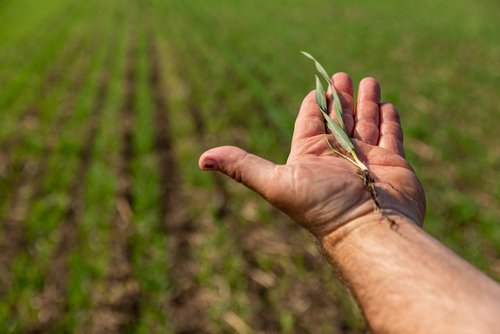Developing Canadian Western Red Spring Varieties for Northern Areas

Written by: Ian Doig
On the northern Prairies, diseases and growing conditions, including soil type and climate, differ considerably from those to the south. Funded by the Canadian National Wheat Cluster, Santosh Kumar and his team at the Agriculture and Agri-Food Canada (AAFC) Brandon Research and Development Centre develop CWRS wheat varieties in line with the unique requirements of northern farmers.
With the short growing season and colder nights, plants have less time to complete their lifecycle, said Kumar. “Plants must have certain unique traits to survive the northern Prairies. We do additional adaptation testing on the northern area to acclimatize the plants, so they can survive these pressures but also yield premium quality CWRS wheat.”
Growth conditions are not uniform within the vast parkland region that extends from northeastern British Columbia to northern Manitoba. While northern CWRS varieties are tested in Manitoba, Saskatchewan and B.C.’s Peace River Country, northern Alberta is the focus of breeding work. “We target our lines where maximum acreage is located, because that’s where the maximum benefit to the farmers is,” said Kumar. Primary variety crossing work is carried out at the AAFC Beaver Lodge Research Farm. “We grow and select the early generation germ plasm there, so it is screened in the region where it is targeted.”
Further development is carried out in Brandon, where the resistance package is broadened to include pests and diseases not prevalent in the north. This increases the resilience of northern varieties in the event these threats invade the region. This versatile resistance package has seen northern CWRS varieties adopted beyond the region. For example, though developed for the north, AAC Redwater has been grown by farmers across Manitoba for its early maturity as well as Fusarium and midge resistance.
Two years ago, Kumar’s team improved upon AAC Redwater with the release of AAC Redstar. Though it is northern-specific, with its maximized resistance to Fusarium, it can be grown across the Prairies. The team also recently developed early maturing, highly midge resistant AAC Darby and its refuge pairing AAC Hassler.
Farmers are the biggest motivators of this breeding program. Their input has identified three focus areas, said Kumar. With older varieties, northern farmers often produced feed wheat. “We took that to heart, and we said, ‘OK, what do we need to improve?’” Paying close attention to falling number as a quality indicator, Kumar worked to improve resistance to pre-harvest sprouting by pyramiding multiple genes that have this effect. “Sometimes farmers are harvesting when it’s snowing,” he said. “So, if the temperature is low and moisture conditions are high, AAC Redstar does not lose the grade.”
Stripe rust resistance is also critical to northern varieties. This, too, was strengthened in AAC Redstar. Thirdly, southern semi-dwarf varieties tend to grow taller when seeded in the north, so the team introduced ultra-semi-dwarf genetics to discourage lodging and promote yield over the growth of the plant body.
“We incorporated these three major traits, so farmers get a consistent yield advantage, disease protection and the quality profile they expect from CWRS,” said Kumar.